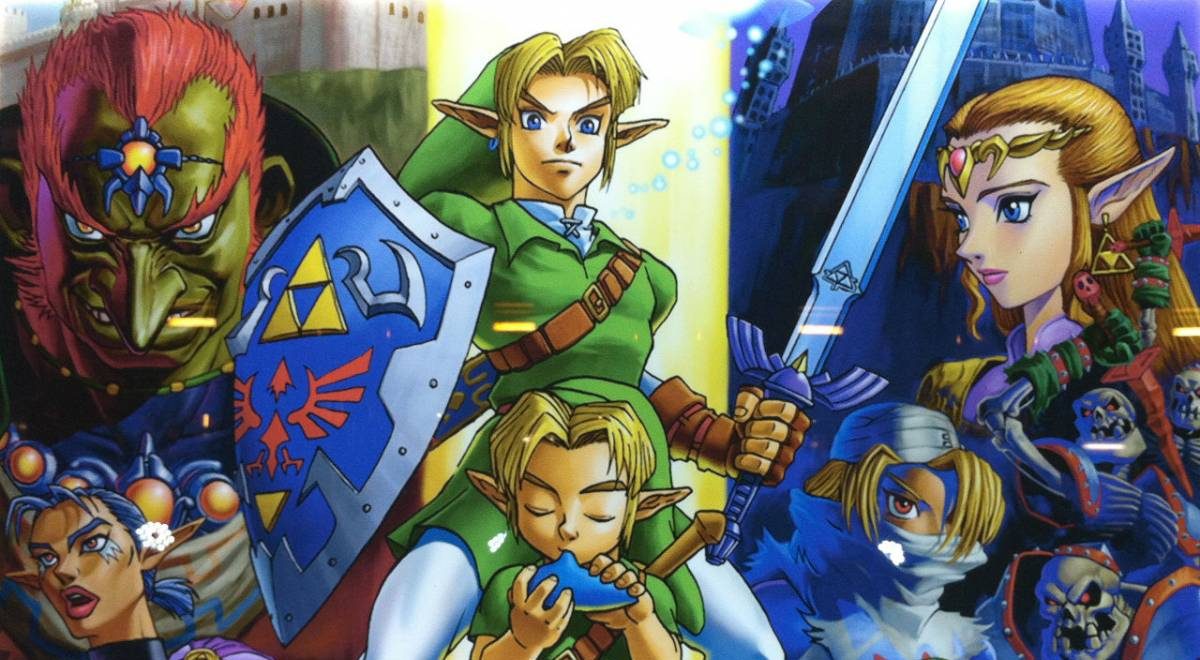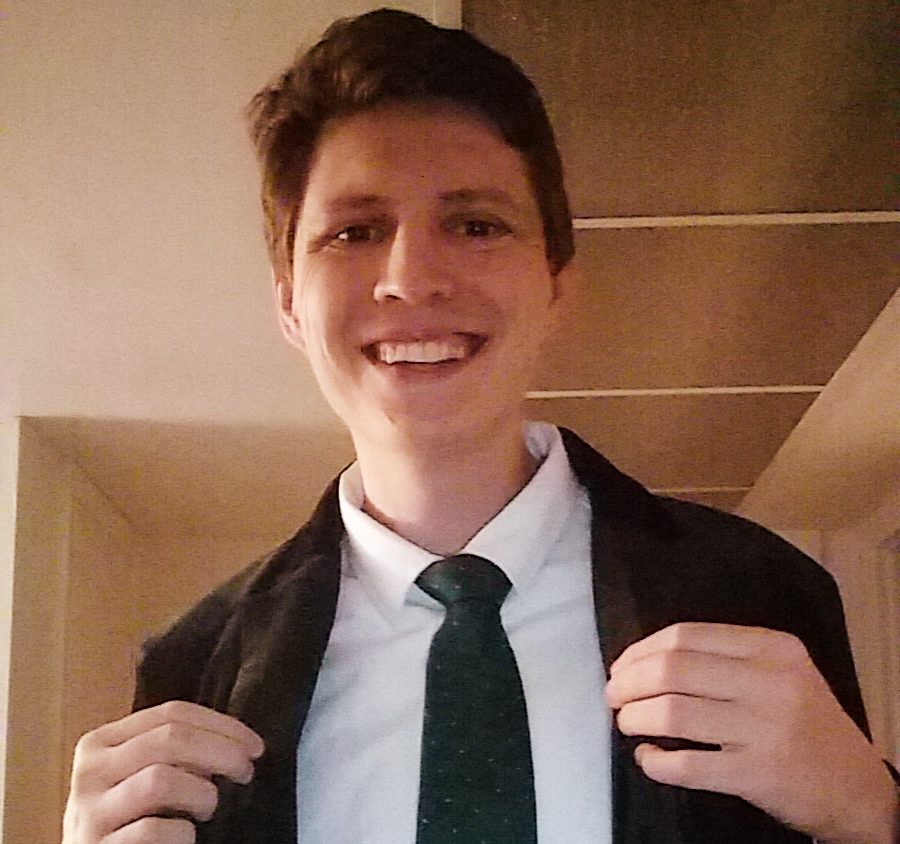How Ocarina of Time Sets Up Its Story

In my opinion, the structure of Ocarina of Time‘s story is key to its overall effectiveness. The story of Ocarina of Time starts in the child timeline, which lets the player control a young Link for the first third of the game. The player explores the world as young Link and they start to understand the status quo of the world. They also gets a chance to take in the wonders and dangers of a vast (at least by 1990s standards) world. In their early quests, Link and the player are introduced to key characters including Zelda, Ganondorf, and most of the character who will later become Sages in the adult timeline. After collecting the three spiritual stones, Link and Zelda are tricked by a wily enemy, and they play an unwitting role in Ganondorf’s ascension to power. The moment Link lifts the Master Sword from the pedestal is a stunning story moment; a paradigm shift that transforms the game world that the player has inhabited in the first portion of the narrative.
When Link emerges from his seven year slumber, the player has to re-explore a world that has changed in their absence. While video games have come very far with technology in the past twenty five years, the relatively small size of Ocarina of Time allows the player to revisit key locations from Link’s childhood in the adult timeline. This smart design idea helps the player notice the changes that were suppose to place in the game world over seven long years. For example, there is a stark contrast between the soothing, joyous Zora’s Domain that Link visits as a child, and the frozen, empty Zora’s Domain that Link visits as an adult. Old friends and companions like Impa, Saria, Ruta, and Darunia have new roles in the adult timeline, and the player is given opportunities to bond with them once more. Many of the characters make comments about how much Link has grown since their last meetings. These reunions help further build the connection between the child and adult timelines, and they reinforce the passage of time within the game.
The idea of revisiting character and locations in the two timelines helps Ocarina of Time explore nostalgia for and heartbreak related to the past. The player does not just hate Ganondorf because Zelda tell us that he is “the man with evil eyes” when Link was a child. Instead, through Link’s eyes, the player has seen the damage Ganondorf has done to the world and its inhabitant. Fundamentally, Ocarina of Time needs the child timeline for its adult storyline to have its greatest impact.
How Breath of the Wild‘s Story Could Have Been Adjusted To Give The Past Greater Weight

Overall, my idea for how to make Breath of the Wild’s story flow more like Ocarina of Time is to include a 5-10 hour prologue that would take place one hundred years before Link wakes up at the start of the game. This prologue section would be “wide linear,” with Link visiting key locations across the game world. This would include the major towns and other important locations like the outskirts of Fort Hateno. The towns and landscapes around key areas would be explorable like the main game, but the true open world would not yet be fully available. For example, one mission might take place in Goron City, and another mission would allow the player to explore the cliffs around Zora’s Domain. For anyone who has played Uncharted 4, the explorable spaces would be similar to the Madascar section of Uncharted 4. In this section of Uncharted 4, the player explores one large open space, but there is a clear objective that progresses the story (along with some optional side challenges).
This prologue would allow Link to meet and engage with key characters from the past at the very beginning of the game, rather than at its middle or end. These missions would establish an initial “status quo” for what Hyrule is like, how Link and Zelda interact, and who the other four Champions are. For example, Link might have to help Daruk with a task around Death Mountain, and the quest and accompanying cutscenes could help the player make a connection with the Champion at the start of the story. One major challenge with this prologue idea is that there would need to be some type of gate or unclimbable surface that would keep people from going too far off the beaten path during early missions. These restrictions would disappear in the main game world once the open world is fully available to the player.
This prologue section of the game would end with the arrival of Calamity Ganon. Link and Zelda’s last stand outside of Fort Hateno would be playable, rather than just a cutscene. An endless amount of Guardians would attack Link, and the player would have to fight off as many guardians as they could. Once the player ran out of hearts, Link’s death cutscene (the final memory in the game) would trigger. This would lead directly into Link waking up at the Shrine of Resurrection. From here, the game would function almost identically to the original game. Link could go straight to Hyrule Castle, free the Divine Beasts, or just explore the overworld. Optional memories could still be utilized, giving the player additional scenes between Link, Zelda, and the other core characters, characters that the player may now feel more connected to.
I would also note that the Zelda series is not the only Nintendo franchise to have a two timeline or two era story. Intelligence Systems’ brilliant tactical RPG Fire Emblem: Three Houses also has a story that spans two time periods. The story of Fire Emblem: Three Houses utilizes an approach similar to Ocarina of Time, with a key story event triggering the change in time periods. Much like Ocarina of Time, the narrative structure of Three Houses helps the player build connections with key support characters early in the story. When those characters reappear after a time jump, many players have a palpable sense of joy and satisfaction at seeing their allies again.
How Introducing The Past Would First Would Reshape The Narrative of Breath of the Wild

Overall, I believe that a prologue or introduction section would help give the past more emphasis, and I think it would make the story of Breath of the Wild more impactful. Within Breath of the Wild (baring Age of Calamity, which I will address in the conclusion), the events of one hundred years ago are not well explained, and the player does not have a real way to connect to The Champions outsides of some brief memories. These four characters, who are some of the best characters in the game, are already dead by the time of Breath of the Wild‘s main story. Besides one brief cutscene at each of The Champion’s home town and their spectral presences within the Divine Beasts, the player has no concrete way to interact with and learn about these key characters. It is asking a lot of the audience to feel invested in character relationships that they never saw develop during the game.
Some adjustments in the narrative structure might also add more gravitas and emotion to the confrontations with the Blights. Rather than Link avenging a significant but distant stranger, the confrontations with the Blights beomes more of a way for Link to avenge the death of his close friends. The short prologue section could lay the groundwork for why the player should hate the Blights and Calamity Ganon. Seeing Ganon devastate the world would also heighten the emotional stakes for the final battle at Hyrule Castle. By giving more detail to and focus on the events of the past, the story can more clearly show how Link is coming face to face with the force that tore his world apart. After Ganon put Link, Zelda, and the Champions through hell, Link has a chance deal out justice for everyone and everything has the monster has taken away from him. The defeat of Calamity Ganon could provide closure for the apocalyptic tragedy that shaped Link and Zelda.
Conclusion

Ocarina of Time and Breath of the Wild are two great games, and each game has had a major impact on gaming. But in a direct comparison of the two, I believe that Ocarina of Time capitalizes on its two timeline story in a way that Breath of the Wild fails to. While Ocarina of Time‘s story is quite simple, that does not mean that the story is ineffective. The straightforward narrative allows Nintendo to chart an engaging “Hero’s Journey” storyline about a character and world growing and changing. The linear nature of Ocarina of Time allowed the designers to craft a story that transitions from one era to another seamlessly, and the team uses the changes in the game world to emphasize the themes of the story.
Overall, the story of Breath of the Wild is much stronger in concept than execution. Unfortunately, the key story moments and powerful themes found within the game are too thinly spread out in the game’s run time. Breath of the Wild even features some of the most emotional cutscenes in any Zelda, like the one where Link comforts a distraught, weeping Zelda, but they scattered across the overworld. Many of these powerful moments can be easily missed or found randomly, which I think is a frustrating way to experience a story. It seems like the restrictions and challenges of open world storytelling make it difficult to create a narrative that moves as smoothly as Ocarina of Time‘s story does. While Nintendo has moved away from the linear nature of previous 3D Zelda games, it is fascinating to think about what effects some linearity or more scripted events could have on Breath of the Wild’s story. Is there a design and storytelling compromise that Nintendo can reach for Breath of the Wild’s sequel?
Despite its strange place in canon, Hyrule Warriors: Age of Calamity is an interesting wrinkle in discussing Breath of the Wild‘s story and characters. The Dynasty Warriors style game, set in a version of Breath of the Wild‘s past, is quite effective at building the connection between the player and different characters from the past. By allowing the player to interact and take on the role of key characters (like the four Champions), the game is endearing and connecting the player to those characters. In short, I believe that Breath of the Wild and its narrative will likely benefit long term from character moments and storylines present in Age of Calamity. Regardless, it is important to remember that these moments are not present in Breath of the Wild, but instead part of a subsequent spin-off game.
Perhaps Nintendo will return to a more linear design at some point in the future, or find a happy medium. Until then, this topic is one big “what if”?
Sean Gadus is an Associate Editor at Zelda Dungeon. His first Zelda game was Ocarina of Time and he loves the 3D Zelda games from 1998-2011. He is currently exploring Edward’s Island in Oxenfree for the third time. Additionally, he is currently reading the newly released Star Wars novel Thrawn Ascendancy: Lesser Evil and Philip Pullman’s His Dark Materials. He is excited for the 2021 Cleveland Cavaliers season. He wants to help build a kinder, more compassionate world.





